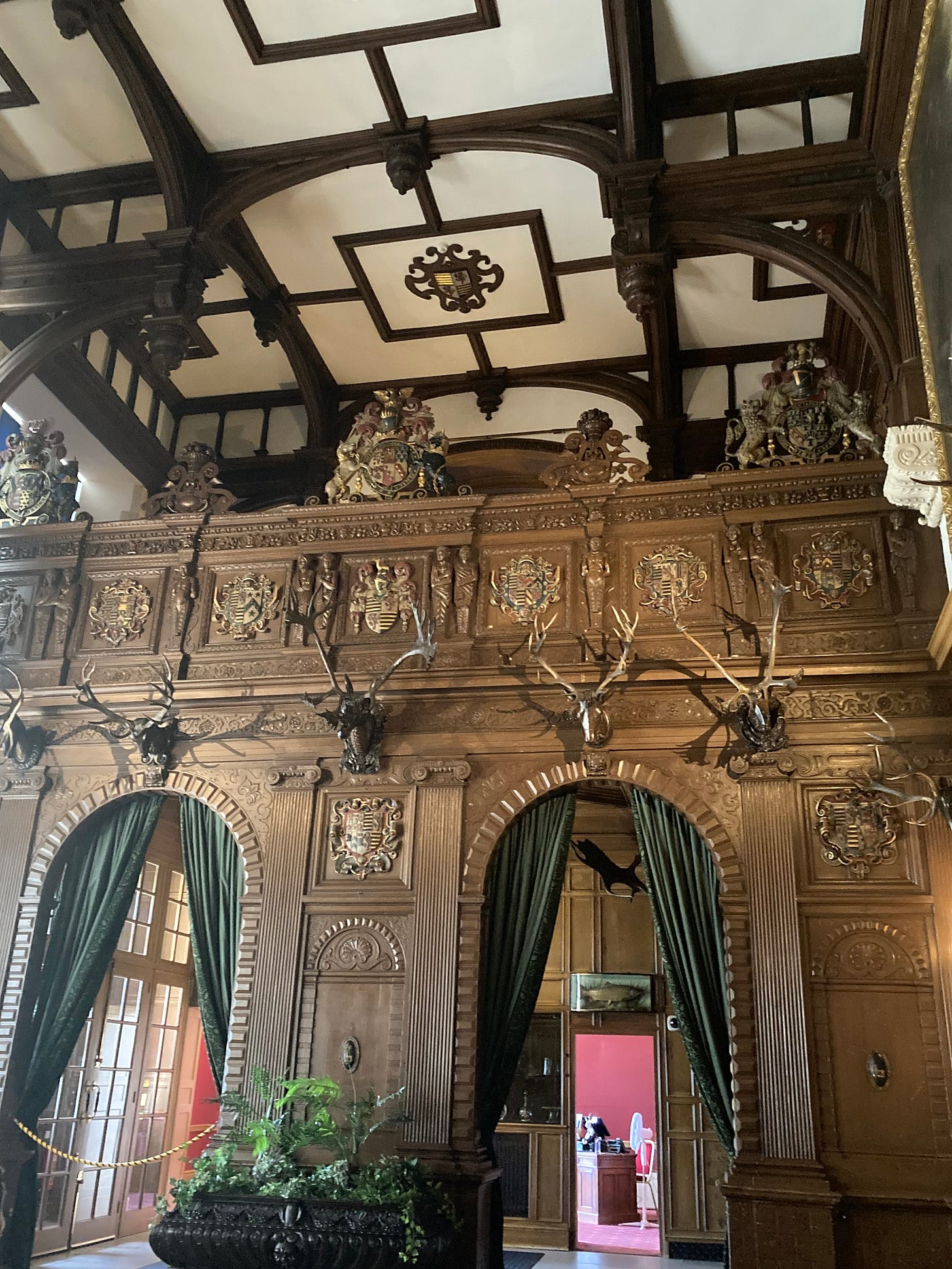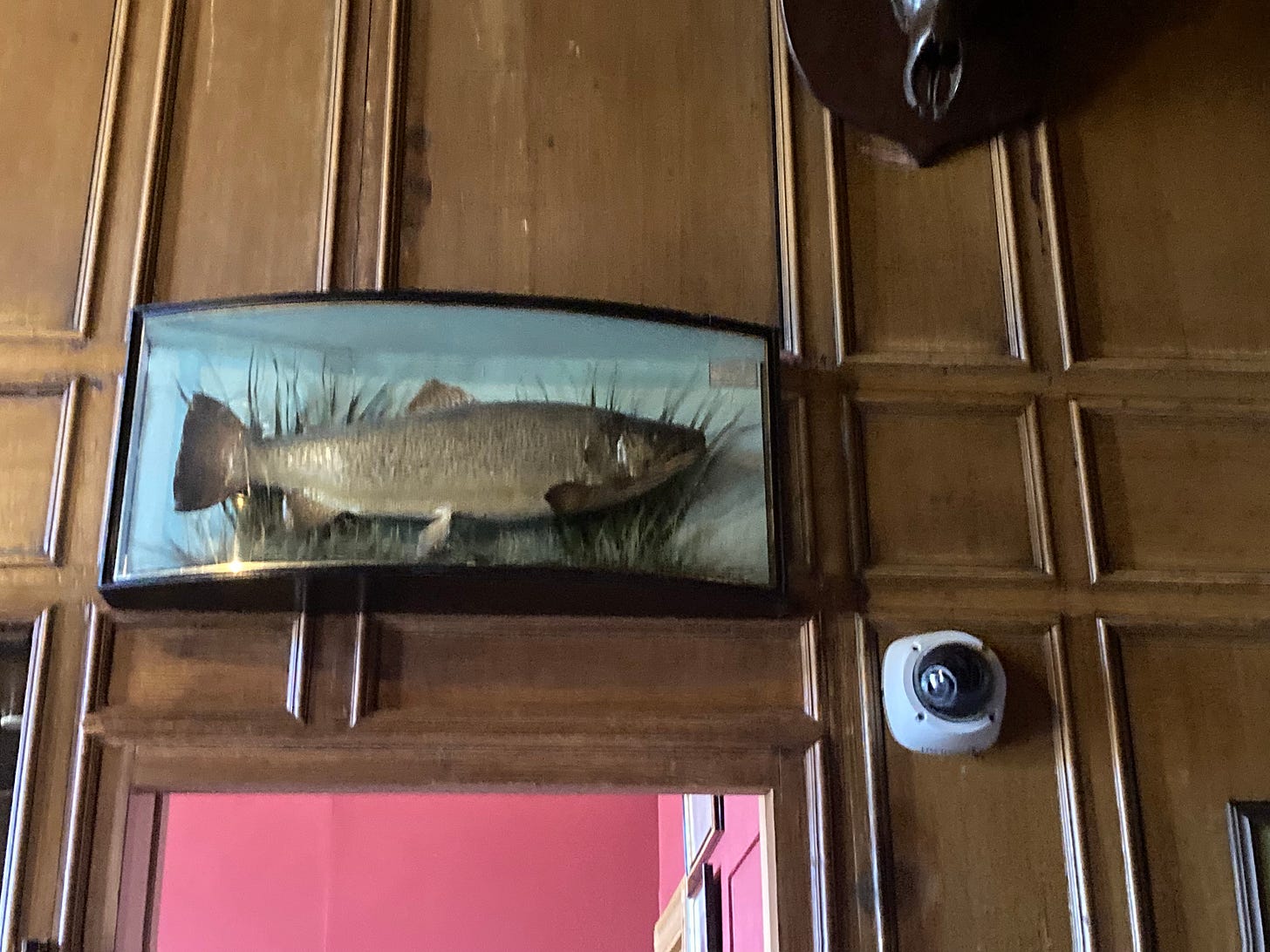Last time we played follow the money, the trail took us to the National Land Fund and the story of how the national memorial to the Second World War, set up to create open access land for everyone to enjoy, ended up paying for a lot of stately homes instead, with the family quite often remaining in residence.
But the aristocrats who didn’t give their home to the National Trust didn’t want to be left out. And they weren’t, receiving huge amounts of public money in the years since the war. At first, during the 1950s, this came as direct grants for repairs and restoration, but since then it’s mostly been in the form of tax breaks. And to see what just a bit of this looks like in practice, we’re off to Longleat.
Longleat is an odd mixture of a house. From the outside - which is how people much prefer to talk about it - the building appears is surprisingly unchanged from when it was built in the sixteenth century
Although hyper-modern when it was built, the architecture has now become the very picture of ancient heritage and the Mansions of Ye Olden Times. This is mostly superficial: the inside was substantially reworked by the architect Jeffrey Wyattville and the decorators Craces in the middle of the nineteenth century, and so is almost entirely a stolid Victorian version of Italian. Not that much of the writing about the house likes to tell you that.
The exception is the first room on the tour, which is the Great Hall. Even at the point that Longleat was first built, this was becoming an archaism: no longer did any Lord require a room this large in order to dine with his retinue each evening. But this didn’t stop further Great Halls from being built, even in ‘modern’ seventeenth century houses like Hatfield and Longleat, as a suggestion that the relevant Lord could muster up that many armed men if he wanted to, and serve them all dinner to boot1.
Like many great halls, it also acts as an index to the rest of the house, and the general interests of the aristocracy. So at Longleat we can see deer antlers (souvenirs of hunting), elk antlers (souvenirs of owning large chunks of Ireland), heraldry (a reminder of the age and breeding of the family), armour and weaponry (just a hint of past fighting power) and paintings (because this is required for a stately home). And also a fish.
Some items work on multiple levels, including a set of oil paintings of horses and hunting, produced in the eighteenth century , which, as the Victorian catalogue of paintings puts it are “large pictures by John Wootton, representing the second Lord Weymouth, several gentlemen, members of the hunt, attendants, horses, hounds, etc. etc.”
The paintings serve as a reminder of just how much the upper classes like hunting, because it’s a sign that they had lots of leisure and owned lots of land that they could trample on without the tenants being able to complain. Win win, at least if you are the lord rather than the farmer. Other opinions are also available, particularly given that one of the paintings depicts ‘Digging out the fox’.
But the pictures also contain other stories. Longleat like to tell one about the painting above. The groom seen here holding a horse was discovered as a foundling and brought up by the household, albeit as a relatively menial servant, but was killed aged only fourteen by one of the stallions in his charge.
The story I am interested in is about ownership. Because, although there is nothing on the walls or written in the guidebook to tell us, these paintings are actually mine. And yours as well. Rather than belonging to the Marquess of Bath, they are the property of the nation. And as such, they tell us quite a bit about the ways in which the aristocracy are propped up by public money.
As I am not a tax lawyer nor intend to be, this is going to be a very simplified version. But in short, the Marquess of Bath had a big liability for inheritance tax which became due in 20022. Rather than paying the £5.4 million which was owed, he offered the eight Wootton paintings to the government ‘in lieu of tax’.
This happens quite a bit, particularly when death duties are liable. Rather than paying in actual money, the aristocracy negotiate a deal where the bill is settled in paintings, furniture and archives instead3. Now, I’m not generally against this, because the objects go to a museum and everyone gets to enjoy them, generally for free and in a place you can reach by public transport.
But this is not what happened to the Wootton paintings, as you can deduce from the fact that they are still on the walls of the Longleat hall over twenty years later. While they are technically owned by the Tate Gallery, they are on permanent loan to Longleat “because they are regarded as an integral part of the house”.
I have a lot of bones to pick with this, not least that I have to pay money to Longleat - not just their extortionate entrance fee but also an additional charge to go into the house - to see something which belongs to the nation. And while I can cycle there, that’s not true for most of the population.
But what really bothers me is that what’s happening here is the same old game. We are subsidising the aristocracy to live in their big expensive houses that they cannot afford. And for what? So that these buildings can continue to remind us that the upper classes are superior, and we ought to be grateful to be permitted to see how the rich, privileged and over-bred live.
Even the Acceptance In Lieu report on the paintings accepts that this is getting close to enabling “possessors of great houses to ‘have their cake and eat it’” But apparently the owners don’t get to benefit from capital appreciation, so that’s OK.
The Wootton paintings are not the only items to remain in a private house either. A set of Chippendale side tables and mirrors (or in the jargon, pier tables and pier glasses) from the Music Room at Harewood were accepted in 2019 for the V&A but are on permanent loan to Harewood, after having the benefit of professional restoration from the museum’s conservation department. How lovely for everyone.
I will also note that at no stage were the words ‘chattel slavery’ or ‘proceeds of enslaved people’ or anything similar come up in the descriptions, even though this is where the money to pay Chippendale came from. Furthermore, it will cost £30 should you want to visit your own pier glasses and tables at a weekend (although there is at least a decent bus service from Leeds). And there’s more, at Corsham Court, Houghton Hall, Highclere and Castle Howard, among others.
Just once - and oddly quite recently - does the mask of general collecting slip and the actual agenda become visible. The Acceptance In Lieu Report for 2007/8 unexpectedly contains the following paragraph in its introduction.
The great houses of the UK are a precious asset. These houses, their collections, parks and gardens are an integral part of our national life and history – the castle where Edward II was murdered, the house where Queen Elizabeth I was living when she was called to the throne, the palace given by the nation to the victor of Blenheim, the house where the Waverley novels were written, galleries lined with works of Titian and Claude, Van Dyck and Reynolds, Sargeant and Moore and Freud. Some of these places contain historic relics that are crucial for an understanding of local as well as national history; others chronicle the development of British taste over the centuries; yet others contain great masterpieces that are the envy and target of museums worldwide. In no other country are so many key historic and artistic treasures still in private hands.
It then goes on to lament the decline of primogeniture (i.e. keeping property out of the hands of women) and to insist that the country house must survive.
The whole thing is like a last, late eruption from the 1950s, as the upper classes desperately cast around for a way of maintaining their privileges without having to do something which might look like actual work.
The piece was written by Jonathan Scott, whose background included Harrow, Classics at Oxford, hunting, a family who had colonised India and of course being a member of the landed gentry in Gloucestershire as well as a banking career4. In short, the voice of the establishment.
And we are back to that old, repeating question. In whose interests is it to keep these places as they are? Why should we be providing public money to do this?
I can certainly see that Jonathan Scott was just the kind of person who would prefer things not to change, but for the rest of us, I don’t think that the offer is so clear cut. So perhaps we could spend some more money on working class heritage sites, and a bit less on keeping the upper classes in the style to which they have become accustomed over so many generations. But that’s quite difficult while they are still running the committees and settling the tax bills.
Next time: more tax avoidance in the form of trusts. About which I also have questions.
This clinging on to ideas, practices and things which are no longer actually useful is one of the key characteristics of the upper classes, who ride horses despite the invention of the car; use heraldry - last useful before guns were invented - to explain who they are and learn Latin to prove they are the natural rulers of the world. And, of course, they preserve vast, outmoded and expensive houses as their homes.
The longer version is that this happened because he’d already been excused some inheritance tax when his father died on the grounds of owning objects of national significance (or something, this is where I get hazy) but when he sold some of these pieces, the tax then became due.
There is a whole bureaucracy which deals with this and issues annual reports every year.










Thank you, Susannah, for your work. It's so important to remind the British who really owns what